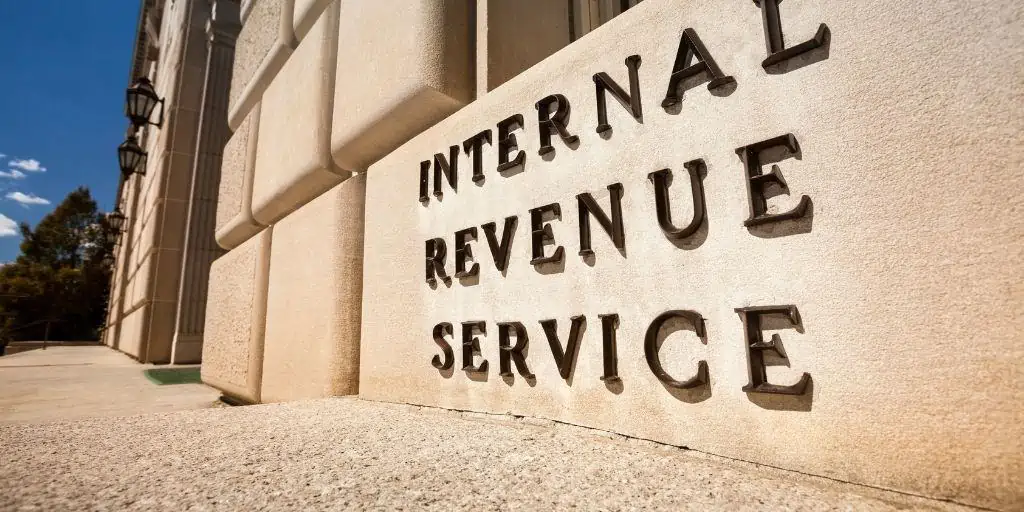What Is the Applicable Federal Rate (AFR)?
REtipster does not provide tax, investment, or financial advice. Always seek the help of a licensed financial professional before taking action.
The AFR in a Nutshell
Traditional loans generally benefit lenders through interest rates, but private loans, such as loans between relatives or friends, tend to benefit the borrower. Left unchecked, people can easily use the excuse of “private loans” to commit fraud.
To prevent these, the Internal Revenue Service limits the terms of a private loan, particularly how low its interest rate can be without incurring tax penalties. They do this by assigning an applicable federal rate, or AFR.
The AFR is the lowest interest rate permitted by the Internal Revenue Service (IRS) for personal loans. Any interest rate below the AFR benchmark violates IRS regulations and can have tax implications.
The IRS designates the AFR based on data from the yields of marketable debts, such as government bonds and Treasury bills. As stated by Section 1274(d) of the Internal Revenue Code[1], the IRS publishes the AFR every month[2].
Personal Loans vs. Gifts
Strictly speaking, if someone wants to loan money without expecting it to be repaid, it can be considered a “gift” and not a loan.
However, both gifts and personal loans must be reported when filing income returns—the difference is in how they are filed. For gifts, the person is expected to file IRS Form 709, United States Gift (and Generation-Skipping Transfer) Tax Return[3].
Every year[4], the IRS imposes a limit on how much one may receive in gifts without incurring tax implications. This is known as the annual gift tax exclusion, which means any gift worth more than this amount will incur taxes on the amount in excess.
How Does AFR Work?
Setting a benchmark limit allows the IRS to compare interest rates charged by different parties in a given period. This is useful when family or friends are involved in a loan transaction. For instance, if a person wants to give a loan to their uncle, they must charge an interest rate higher than the given AFR for that month or risk a penalty from the IRS.
AFRs are also helpful in determining the original issue discount, gift tax, income tax consequences, and unstated interest of below-market loans[5].
There are three categories of AFRs depending on the length of the loan.
1. Short-Term AFR
This is the applicable federal rate charged on private loans with a maturity period of up to three years. Short-term AFRs are determined from the one-month average of the market yields from T-bills[6] and other marketable debts with maturities of three years or less.
2. Mid-Term AFR
This is the applicable federal rate charged on private loans with a maturity period of three to nine years. Mid-term AFRs are based on marketable obligations[7] with maturities of over three and up to nine years.
Examples include Treasury notes, bonds, and other fixed-income securities.
3. Long-Term AFR
This is the applicable federal rate charged on private loans with a maturity period of longer than nine years. Long-term AFRs are determined from long-term debt instruments, such as government bonds with maturities of over nine years.
The lender should ensure that the length of the loan corresponds to the right AFR for that month when loaning money to family or friends.
Blended Annual Rate
In some cases, a personal or private loan may not have a specific term, making it difficult to select the appropriate applicable federal rate. In such instances, the Blended Annual Rate is useful, defined as the average interest rate between an existing loan and a new loan.
If a borrower applies for an additional loan without fully repaying the previous one, the lender may apply a blended annual rate.
Similarly, if a private loan has no specified term and has been outstanding for more than one year, the IRS may apply the blended annual rate based on the AFR of the previous year and the current year.
Other AFR Conditions
In addition to the three categories for AFRs, the rulings in which the rates are published contain other conditions. These include:
Compounding Period
The AFRs are adjusted to account for the compounding period—annually, semi-annually, quarterly, and monthly. Shorter compounding timeframes lead to higher annual interest. Therefore, AFRs tend to be lower for compounding interest on shorter timeframes.
Low-Income Housing Tax Credit (LIHTC)
The LIHTC refers to the rate of tax credit that low-income households receive on the value of their loans[8]. The AFR is used as the “applicable percentage” for determining the eligible basis of tax credit properties under the LIHTC program.
Rate for Valuation of Annuities
This rate determines the present value of an annuity or a reversionary interest as per section 7520 of the IRS code[9]. It is also part of the calculation for determining the charitable deduction for charitable remainder trusts and gift annuities.
The rate is calculated as 120% of the annual compounding mid-term AFR.
The Sale-Leaseback Rule and Exceptions
A sale-leaseback transaction is when an asset is sold and then leased back for use. The rule states that 110% of the AFR shall apply for such transactions[10].
Some sales are exempted from this rule, such as:
- Farms or small businesses valued at less than $1,000,000.
- Primary residences.
- Publicly traded debts.
AFR Examples
Suppose this year, the IRS published an annual short-term AFR of 1.85%, a mid-term AFR of 2.51%, and a long-term AFR of 2.66%
Assuming a person decides to lend $10,000 to their sister for a term of two years, they will need to charge an interest rate of at least 1.85% on the loan since it falls within the short-term AFR ruling for the month.
At 1.85%, the total interest charged will amount to $185.
This means the sister needs to pay back $10,185 at the end of the loan term. If less than $185 in interest is charged, it will be deemed a below-market loan, and both parties may be subject to tax implications.
Imputed Interest Rates
Based on the example above, if the IRS discovers that the lender charged below the short-term AFR of 1.85% on the loan, the IRS would add imputed interest to the income to reflect the AFR.
Imputed interest is simply the rate that the IRS assumes a lender has received for a loan. When filing their income return, the lender must report the income gained from the loan interest based on this imputed rate, whether or not they actually received it.
Takeaways
- The applicable federal rate or AFR is the minimum rate of interest allowed by the IRS on private or personal loans without incurring tax. If a lender charges an interest below the AFR, the IRS may impose imputed interest.
- Interest charged below the AFR for that month is a violation of IRS regulations and can trigger a taxable event.
- Note that a personal loan is different from a gift. A loan needs to be repaid; a gift does not. However, both need to be filed with the IRS.
- The IRS publishes AFRs every month based on aggregated data from the yields of marketable debts, such as bonds, Treasury bills, and Treasury notes.
Sources
- Internal Revenue Service. (n.d.) Tax Code, Regulations and Official Guidance. Retrieved from https://www.irs.gov/privacy-disclosure/tax-code-regulations-and-official-guidance
- Internal Revenue Service. (n.d.) Applicable Federal Rates (AFRs) Rulings. Retrieved from https://www.irs.gov/applicable-federal-rates
- Internal Revenue Service. (n.d.) About Form 709, United States Gift (and Generation-Skipping Transfer) Tax Return. Retrieved from https://www.irs.gov/forms-pubs/about-form-709
- Internal Revenue Service. (n.d.) Frequently Asked Questions on Gift Taxes. Retrieved from https://www.irs.gov/businesses/small-businesses-self-employed/frequently-asked-questions-on-gift-taxes
- Smith, J. (2018). Phantom Income – Below-Market Loans and Imputed Interest. Boardman Clark. Retrieved from https://www.boardmanclark.com/publications/business-minute/phantom-income-below-market-loans-and-imputed-interest
- Prebon, T. (n.d.) U.S. 1 Month Treasury Bill. MarketWatch. Retrieved from https://www.marketwatch.com/investing/bond/tmubmusd01m?countrycode=bx
- Corporate Finance Institute. (n.d.) What are Marketable Securities? Retrieved from https://corporatefinanceinstitute.com/resources/knowledge/finance/marketable-securities/
- Tax Policy Center. (n.d.) What is the Low-Income Housing Tax Credit and how does it work? Key Elements of the U.S. Tax System. Retrieved from https://www.taxpolicycenter.org/briefing-book/what-low-income-housing-tax-credit-and-how-does-it-work
- Internal Revenue Service. (n.d.) Section 7520 Interest Rates. Retrieved from https://www.irs.gov/businesses/small-businesses-self-employed/section-7520-interest-rates
- Corporate Finance Institute. (n.d.) What is the Applicable Federal Rate? Retrieved from https://corporatefinanceinstitute.com/resources/knowledge/finance/applicable-federal-rate-afr/










